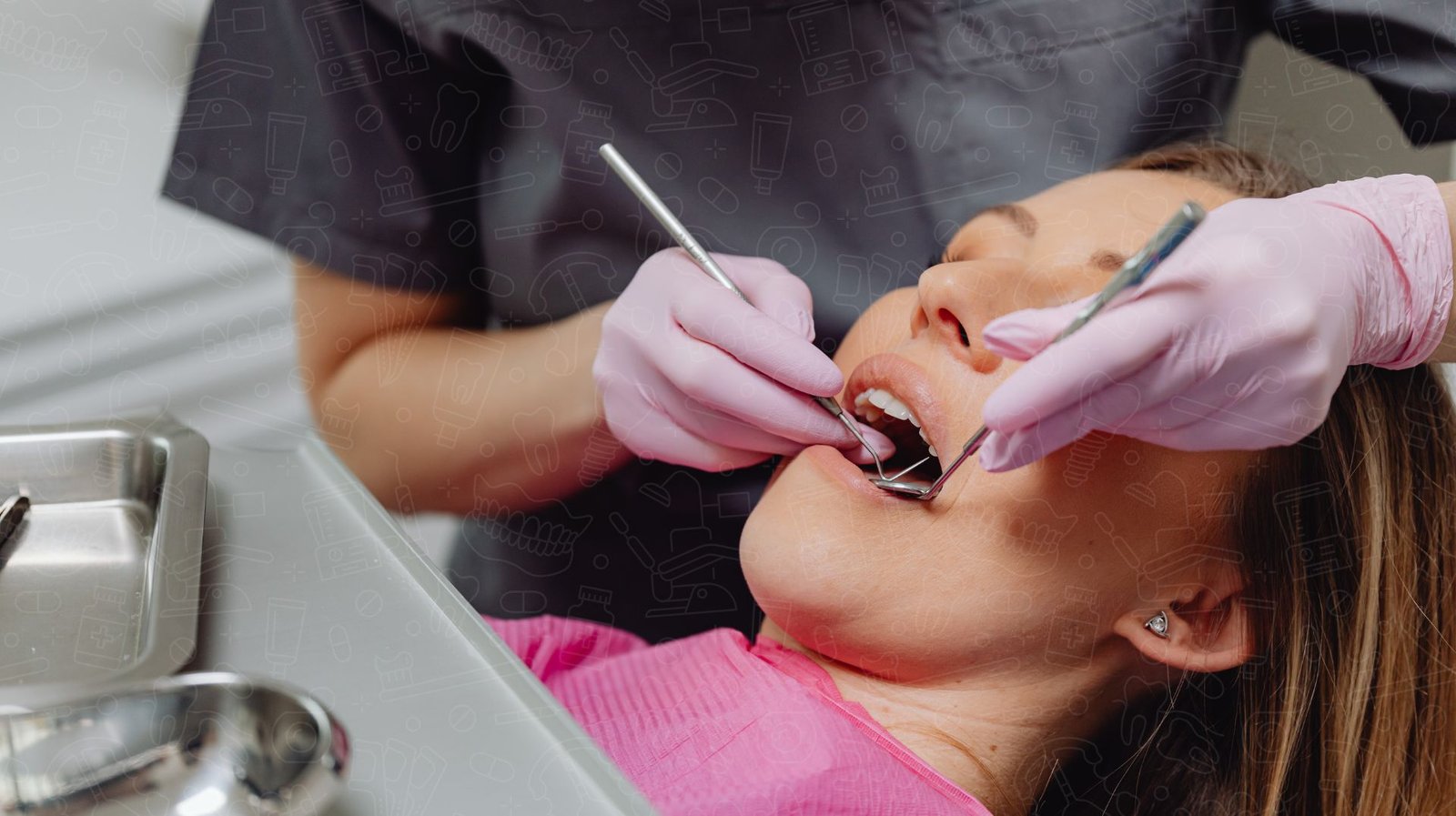Introduction
Bleeding gums can serve as a troubling indicator of potential oral health issues that, if left unaddressed, may lead to more serious complications. Understanding the common causes behind this condition is essential for individuals seeking to maintain optimal dental hygiene and overall health. Poor oral hygiene is often a significant factor, with inadequate brushing and flossing allowing plaque to accumulate and irritate the gums. Furthermore, conditions like gingivitis and periodontitis highlight the importance of recognizing the signs of gum disease, as inflammation and chronic bleeding can stem from untreated infections.
Nutritional deficiencies, particularly in vitamins C and K, can also contribute significantly to bleeding gums, underscoring the interconnectedness of diet and oral health. Additionally, specific medical conditions, such as diabetes and blood disorders, may exacerbate symptoms, further illustrating the need for a proactive approach to dental care. Medications that impede blood clotting are another notable culprit that can lead to increased gum bleeding.
In this article, readers will gain a comprehensive understanding of the various factors contributing to bleeding gums, from poor hygiene practices to the role of systemic health and medication effects. By doing so, it aims to educate individuals on the importance of effective preventive measures, timely intervention, and the promotion of a healthy smile.
Understanding the Common Causes of Bleeding Gums
Bleeding gums can be a troubling symptom indicating underlying oral health issues. Several common factors contribute to this condition, with poor oral hygiene being a primary cause. Inadequate brushing and flossing enable plaque buildup, which can lead to inflammation and irritation of gum tissues. Additionally, infections, such as gingivitis, a mild form of gum disease, often manifest with bleeding as one of their key indicators.
Another significant cause of bleeding gums is the presence of periodontal disease. Conditions like periodontitis, which develop from untreated gingivitis, can severely affect the supporting structures of teeth, resulting in chronic bleeding. Furthermore, improper brushing and flossing techniques play a critical role; using a hard-bristled toothbrush or incorrect flossing methods can damage delicate gum tissue, triggering bleeding during oral care routines.
It’s essential to recognize that bleeding gums can also be linked to nutritional deficiencies. A lack of vital vitamins, particularly vitamin C and K, can compromise gum health and lead to increased vulnerability to bleeding. Understanding these common causes is crucial for effective prevention and early intervention. By addressing oral hygiene, recognizing signs of gum disease, and ensuring proper nutrition, individuals can significantly reduce the occurrence of bleeding gums and promote overall dental health.
Gum Disease and Its Role in Bleeding Gums
Gum disease, primarily in the forms of gingivitis and periodontitis, plays a significant role in the occurrence of bleeding gums. Gingivitis, the initial stage of gum disease, is characterized by inflammation and can result from poor oral hygiene that allows plaque to accumulate on teeth and gums. As plaque hardens into tartar, it can further irritate gum tissue, leading to symptoms such as sensitivity and bleeding, especially while brushing or flossing.
If left untreated, gingivitis can progress to periodontitis, a more severe condition that not only affects the gums but can also deteriorate the underlying bone structure supporting teeth. Periodontitis causes gums to recede, creating pockets that trap food particles and bacteria, exacerbating inflammation and increasing the likelihood of bleeding.
Furthermore, the body’s immune response to the bacteria associated with gum disease can also lead to chronic inflammation, contributing to more advanced symptoms. Individuals suffering from these gum conditions must prioritize improved oral hygiene practices, including regular dental check-ups, to manage and reverse the effects of gum disease. Early intervention is crucial; if symptoms of bleeding gums persist, consultation with a dental professional is recommended to avoid further complications and maintain overall oral health.
Improper Brushing and Flossing Techniques
Many individuals may unknowingly contribute to gum bleeding through improper brushing and flossing techniques. Aggressive brushing with hard-bristled toothbrushes can erode sensitive gum tissue, increasing the likelihood of bleeding. The effectiveness of oral care is not solely determined by the intensity of the brushing; rather, a gentle approach with a soft-bristled toothbrush is recommended for maintaining healthy gums.
Additionally, improper flossing techniques can exacerbate the problem. For instance, snapping the floss between teeth can cause trauma to the gum margin, leading to inflammation and bleeding. Instead, using a gentle sawing motion while wrapping the floss around the teeth is essential for effective plaque removal and gum protection.
Moreover, neglecting to include regular dental visits in one’s oral care routine may compound these issues. Professional cleanings enable dentists to identify and address any improper techniques or other concerns that could be contributing to gum bleeding.
Educational resources and demonstrations on effective brushing and flossing techniques are available through dental professionals. Implementing proper oral hygiene practices not only helps in reducing gum bleeding but also contributes to overall oral health. In conclusion, maintaining a delicate balance in oral care can significantly prevent gum damage and promote a healthy smile.
Nutritional Deficiencies That Cause Bleeding Gums
Bleeding gums can often be a sign of underlying nutritional deficiencies, particularly the lack of essential vitamins that play a critical role in maintaining gum health. Two important vitamins are vitamin C and vitamin K. Vitamin C, known for its role in collagen synthesis, is vital for the integrity of gum tissue. A deficiency in this important nutrient can lead to weakened gums, making them more susceptible to bleeding and infection.
In addition to vitamin C, vitamin K also contributes significantly to gum health. This vitamin assists in blood clotting, and inadequate levels may result in excessive bleeding, including from the gums. Foods rich in vitamin K, such as leafy greens, broccoli, and fermented foods, can help maintain robust gum health and prevent bleeding
Moreover, a diet low in antioxidants can exacerbate gum problems by increasing inflammation. Consuming a balanced diet rich in fruits, vegetables, and whole grains is essential for overall oral health. Individuals with recurrent gum bleeding should evaluate their dietary habits and consider consulting a healthcare professional to address potential deficiencies. By prioritizing proper nutrition, one can significantly enhance gum resilience and overall dental health, reducing the occurrence of bleeding gums.
Medical Conditions Linked to Bleeding Gums
Bleeding gums can be indicative of underlying medical issues that extend beyond oral health. Several systemic health problems are associated with this symptom. For instance, diabetes increases the risk of gum disease because it can impair blood flow to the gums and hinder the body’s ability to fight infections. Individuals with uncontrolled diabetes often experience more severe manifestations of gum disease, leading to increased bleeding.
Additionally, certain blood disorders, such as hemophilia or thrombocytopenia, can directly impact the blood’s ability to clot, thereby exacerbating bleeding tendencies in the gums. These conditions necessitate close monitoring by healthcare professionals, as untreated bleeding can lead to significant complications.
Moreover, autoimmune diseases, like lupus or rheumatoid arthritis, can induce inflammation in the tissues, including the gums. This inflammation may cause the gums to bleed easily, necessitating a comprehensive approach to both oral and systemic health for effective management.
Overall, identifying and addressing these medical conditions is crucial for improving gum health and preventing further complications. Regular dental check-ups and consultations with healthcare providers can help to monitor these systemic issues, leading to better outcomes for individuals experiencing gum bleeding. Understanding the interconnectedness of oral health and systemic conditions underscores the importance of a holistic approach to health care.
Medications That May Lead to Bleeding Gums
Certain medications can significantly increase the risk of bleeding gums, prompting individuals to pay closer attention to their oral health. Blood thinners, including anticoagulants like warfarin and aspirin, are commonly prescribed to prevent blood clots but can lead to heightened bleeding tendencies in the gums. These medications inhibit the clotting process, making even minor gum irritation a potential source of noticeable bleeding.
Additionally, some anti-inflammatory drugs, particularly non-steroidal anti-inflammatory drugs (NSAIDs), can also aggravate gum health, contributing to bleeding. Medications for osteoporosis, such as bisphosphonates, may pose risks for dental health as well, leading to complications that can include gum bleeding.
Moreover, certain antiepileptic medications and chemotherapy drugs can have side effects that impact gum tissue, contributing to inflammation and bleeding. Recognizing how these medications may affect gum health is crucial for individuals under chronic treatment regimens.
In light of this, those taking these medications should communicate with their healthcare providers about any oral health concerns. Regular dental check-ups and good oral hygiene practices become even more vital to mitigate the effects of these medications on gum health. By maintaining a proactive approach to oral care, individuals can significantly reduce the incidence of bleeding gums associated with their medication use.
Conclusion
In summary, understanding and addressing the various causes of bleeding gums is vital for maintaining optimal oral health. From poor hygiene and improper brushing techniques to nutritional deficiencies and underlying medical conditions, several factors contribute to this alarming symptom. Recognizing the role of gum disease, such as gingivitis and periodontitis, emphasizes the importance of proactive dental care, including regular check-ups and improved oral hygiene practices.
Additionally, individuals should remain vigilant about their dietary habits, ensuring adequate intake of essential vitamins like C and K, which play a crucial role in gum resilience and overall health. Medications that increase bleeding risks further underline the need for awareness and communication between patients and healthcare providers.
By prioritizing both preventive measures and timely interventions, individuals can significantly reduce the occurrence of bleeding gums and promote a healthier smile. This intricate connection between oral health, nutritional status, and systemic conditions highlights the necessity of a holistic approach to health care. Ultimately, the journey to maintaining healthy gums begins with education and a commitment to lifelong oral care practices. Embracing this knowledge enables individuals to take proactive steps toward achieving and sustaining overall dental wellness.





